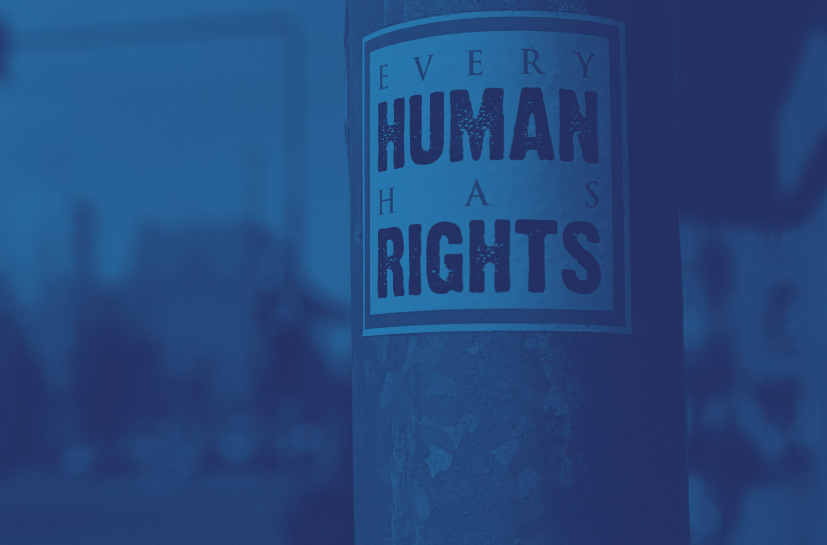
Written by Julia García Álvarez
Introduction
Modern slavery is considered as an umbrella term that includes multiple forms of exploitation. Some of the most frequent forms are trafficking of human beings (including sexual and reproductive trafficking), forced labour and slavery of children for terrorism and other purposes. Nowadays, perpetrators of these forms of exploitation are using new digital tools to recruit, advertise and exercise control over the victims, particularly over women and children living in extreme poverty. For example, the report made by Thorn in 2015 in which 115 victims of sex-trafficking participated, found that the 63% were advertised online, mainly in Backpage, Craigslist and Facebook websites (V. Bouché, 2015).
The Internet and mobile phone technology have improved our lives in many ways, but they have raised many other ethical challenges. These are technologies that keep people accessible and connected everywhere at every time. This type of accessibility drives an exposure of everyone’s privacy that may also lead to dangerous consequences. In human trafficking, this means that traffickers have incorporated Information and Communication Tecnologies (ICTs) in their modus operandis, transforming and modernising the trafficking process. Yet, no regulation is directly enacted that addresses the nexus between sexual exploitation and these digital tools.
At EU level, eradicating human trafficking is one of the main goals of the EU and the Europol. And still, Europe is one of the world’s leading regions in human trafficking. The emergence of the digital age and subsequent development of ICTs have transformed the crimes of sexual exploitation and women trafficking, and yet human trafficking is not mentioned in EU cybersecurity policies (European Commission, 2018).
This article aims to explore the impact of ICTs technology by perpetrators on human trafficking, and the need to elaborate international and regional privacy legislative frameworks that address the new phenomenon of cybertrafficking, by investigating the current international legal framework, but especially, the EU framework. In addition, this article aims to emphasize the compelling necessity to ensure a gender-sensitive and children’s perspective approach in these ICTs-supported anti-trafficking efforts.
Legal Framework on Human Trafficking at International and EU level
There are many international instruments that address the issue of human trafficking regardless its technological dimension. One of the main instruments is the Palermo Protocol. The Protocol to Prevent, Suppress and Punish Trafficking in Persons Especially Women and Children, supplementing the United Nations Convention against Transnational Organized Crime, which was adopted by the General Assembly the 12th of December 2000. This is the first universal instrument that tackles all elements of human trafficking. Palermo Protocol defines trafficking in an inclusive way, and it introduces a gender perspective. It recognizes the unequal power dynamics between victims and perpetrators, and it also mentions the non-absolute character of consent (K. Maltzahn, 2005).
The protocol defines and distinguishes trafficking and exploitation in the article 3, a). According to the Protocol, trafficking is “the recruitment, transportation, transfer, harboring or receipt of persons, by means of the threat or use of force or other forms of coercion, abduction, fraud, deception, the abuse of power or a position of vulnerability or the giving or receiving of payments or benefits to achieve the consent of a person having control over another person, for the purpose of exploitation”. On the other hand, exploitation shall include, at a minimum, the exploitation of the prostitution of others or other forms of sexual exploitation, forced labour or services, slavery, or practices similar to slavery, servitude or the removal of organs; (Palermo Protocol, 2000, art 3. a).
Eventually, Palermo Protocol is the only treaty at UN level that focuses on human trafficking directly. However, two other international treaties need to also be highlighted in the fight against human trafficking: on the one hand, the Optional Protocol to the Convention on the Rights of the Child on the Sale of Children, Child Prostitution and Child pornography, adopted the 25 May 2000, incriminates prostitution and sexual exploitation of children. On the other hand, the Convention for the Elimination of Discrimination of Women, which, through its Article 6, provides a ground for the incrimination of the trafficking of women and the exploitation for prostitution.
At the European level, the main instrument that directly tackles the issue of human trafficking is the Convention on Action Against Trafficking in Human Beings of the Council of Europe, adopted on 16 May 2005. This Convention goes beyond the Palermo Protocol because it focuses on the victim’s perspective, and it defines human trafficking as a violation of human rights. In fact, the preamble of this Convention holds that human trafficking “is a violation of human rights and an offence to the dignity and integrity of human beings” (V. Stoyanova, 2017). At EU level, the main legal instrument that should be highlighted is the Directive on preventing and combating trafficking in human beings and protecting its victims. This Directive also considers human trafficking as a violation of human rights and it focusses on prevention and protection of victims, and it establishes additional measures regarding the investigation and prosecution (A. Pérez Cepeda and D. Benito Sánchez, 2014).
On the technological side, although there is no regulation on the use of ICTs on human trafficking, there is a legislation related to cybercrime at European level that needs to be considered. The Convention on cybercrime was adopted by the Council of Europe in 2001. This Convention specifically addresses child pornography. In this case, child pornography is considered a modern slavery form, and it also constitutes a form of children exploitation, and, in some circumstances, child trafficking. The substantive effort to prosecute child pornography can also be considered as a great advancement towards the prosecution of computer-related crime, which includes cyber trafficking. Although the Convention has its limitation as it focuses only on children’s victims of sexual exploitation online (Schell, B. et al., 2007). The Convention on the Protection of Children Against Sexual Exploitation and Sexual Abuse is also relevant in this context, as well as the Istanbul Convention, which has been interpreted as the definition of sexual exploitation through the elements of physical, psychological and sexual violence, since different forms of gender abuse have the potential to form a chain of elements which can eventually amount to a case of trafficking (EIGE, 2018). In addition to regulations on human trafficking and cybercrime, privacy and data protection regulation is a strong legal mechanism that must be highlighted, considering the attention that is being developed through this issue, and the current legal and policy advancements in this field.
Big Data is a term used to describe a type of technology, but it also represents a new era. It refers to the revolutionary technique of collecting, storing and analyzing enormous amounts of data, which turns into information encompassing transactions, social media, enterprise content, sensors, and even mobile devices. (K.-C. DESOUZA AND K.-L SMITH, ). But this technological advancement has also brought many ethical challenges and privacy concerns, hence the right to data protection is being consolidated as a fundamental right. In this regard, undoubtedly, the main instrument at EU level – but established as a reference worldwide – is the General Data Protection Regulation, that introduces key concepts such as ‘transparency’, ‘data minimization’, ‘consent’, ‘data security’ or ‘rights of erasure’, which can now be enforced through economic sanctions and instruments of monitoring and control by EU Agencies (J. P. Albrecht, 2016).
The use of Information and Communication Technologies on Human Trafficking: cyber trafficking
21st century traffickers are employing modern communication technologies to support their criminal activities. The expansion of the ICTs technologies and the internet has driven a revolution, the digital revolution. It has affected numerous aspects of daily life around the globe, it has enabled people to connect and transfer their daily activities, including facilitating domestic and international trafficking in persons. Social Media is being used by traffickers in the whole process of recruitment, advertisement, and procurement of victims, however, it is unclear the extend to which ICTs are used in both sex trafficking and labor trafficking, and the role of the online environment in trafficking remains an open question (Latonero, 2011).
However, ICTs are not only being used as a tool for traffickers that support them to execute their crimes in the physical space, but it is also being used as a parallel space where a new form of exploitation is possible, for example, through the circulation of images and videos of sexual exploitation, which generates additional economic profit for traffickers, and a new dimension of human rights violations for victims (C. Dettmeijer-Vermeulen, 2012). Undoubtedly, the gender and children dimension appear as an important component, as well as it is important on human trafficking. Hence, it is crucial to consider the gender and children dimension when studying the ethical impact of ICTs, internet, and Big Data technologies (R. Tidwell, 2016).
As previously mentioned, traffickers use ICTs to recruit, advertise and control their victims. The specific tools can be found either in the surface web or in the dark web. On the one hand, the surface web is defined as the portion of the internet that is visible by all users, which, for traffickers, may serve as a platform for advertising and selling services, identifying, and recruiting victims, exercising control over them, and communicating with other trafficking actors. Therefore, this is the visible part of the phenomenon, where anti-trafficking agents can trace and analyze perpetrators’ ‘digital footprint’, which designates the information about trafficking actions that can be found on the Internet as a result of their online activity (O. Stockhem, 2020). On the surface web we can find many popular social media sites and messaging apps such as Facebook, Instagram, Snapchat, Tumblr, Viber, Skype, Facetime, and dating applications such as Elmaz, Twoo, Gepime, Tinder, Grindr or Okcupid are particularly used for international trafficking (Myria, 2017). They connect people and develop relationships, all for free. However, their unlimited potential is also exploited by human traffickers. For example, the report made by Thorn in 2015 in which 115 victims of sex-trafficking participated, found that the 63% were advertised online, mainly in Backpage, Craigslist and Facebook websites (V. Bouché, 2015).
Social media networks are used at the recruitment phase to secure trust and cooperation of vulnerable people, particularly young girls and children, using fake accounts.In this context, the term “online grooming” has been used to refer to the process of building a relationship either in person or online to facilitate sexual contact with that person, either online or offline. Social media can also be used by perpetrators to blackmail their victims, once they have obtained material to use against them, this is, pictures or videos of explicit sexual content (J. Savirimuthu, 2019). Finally, perpetrators normally use social networks to control their victims through social media private chats, using applications such as Skype or Viber (O. Stockhem, 2020).
On the other hand, cyber trafficking takes place in the dark web. The dark web is formed by communication protocols, such as the network Tor, designed to exchange information sent through a vast number of relays around the world. The dark web is mainly used to remain anonymous on the activity performed online, however, this does not mean that all the activity associated with the dark web is malicious or criminal. For example, it can be used for education or research purposes. Although it is also the space for selling drugs and arms, false documents, or, it can even be the place to recruit, advertise and sell people, to offer sex trafficking and child pornography. As an example, Stop the Traffik, a British NGO focusing on intelligence prevention for fighting human trafficking, developed a study in 2018 on the basis of data collected from DeepPaste, a website allowing the posting of anonymous messages, requests, and offers. The study brought to light paste titles such as ‘girls for rent and sale’, ‘sale or rent’ and ‘child escorts’ (Stop the traffik, 2018).
Conclusion
Undoubtedly, the Internet and Information and Communication Technologies (ICTs) have completely changed the current trafficking landscape. The globalization of social media networks and wireless technologies have led to the adoption of global standards towards the production of mobile operators and telecom services that are accessible to everyone, everywhere. They keep people connected and it brings many benefits for society, however, they also raise significant ethical challenges.
Thorn, a NGO dedicated to combat child grooming and sexual abuses online elaborated a list of recommention on their report of 2015. For example, they proposed to develop advertisements that draw the attention of young people and send a clear message that meeting new people on the Internet is not always safe. They have also suggested to display helpline information in bold ads on strategic websites where victims post their advertisements. At a higher level, more recommendations are to adopt comprehensive safe harbor legislation for domestic minor sex trafficking victims that not only provide immunity or diversion for victims, and improve services for domestic minor sex trafficking victims in juvenile detention (V. Bouché, 2015).
Digital vulnerability refers to the risk of exposure of internet users when they generate personal data online. This data is increasingly being collected, aggregated, retained, shared, trafficked and exploited through AI technologies and Big Data for public and private purposes. The collection of massive personal data affects key ethical topics. Besides the phenomenon of cybertrafficking, other related digital ethical issues can be highlighted, among others, the facial recognition system of the iPhone X which collects data to create saleable content (Poell, 2015; Stanley, 2017), or sex robots that mimic pornographic behaviour collected through big data used for sexual pleasure, including enacting fantasies of rape, paedophilia and prostitution (Jurkiewicz, 2018). These ethical concerns and behaviours cause the disempowerment of individuals, particularly women and children, since there is a clear disproportional impact on women and children as victims of human trafficking. Thus, they are a typical subject of digital vulnerability. Moreover, those who are exposed to socio-economic vulnerabilities, and are not educated in digital literacy and are not aware of privacy risks are more likely to suffer this exposure.
References

 Is EU citizenship for sale – or for keeps? A critical analysis of the CJEU’s Golden Visa ruling.
Is EU citizenship for sale – or for keeps? A critical analysis of the CJEU’s Golden Visa ruling.  The European Union in Space: From exploration and innovation to security and autonomy
The European Union in Space: From exploration and innovation to security and autonomy  The Rise of the Right: The Threat Right-Wing Extremism Poses to Women and Feminist Efforts in Germany
The Rise of the Right: The Threat Right-Wing Extremism Poses to Women and Feminist Efforts in Germany  The silent shield – how special operations safeguard the global supply chain
The silent shield – how special operations safeguard the global supply chain 


